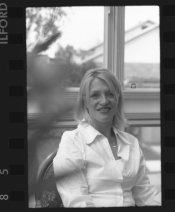Patrick Latour
Member
Hi all, first, I am posting here because I think my problem comes from the darkroom part of my workflow. If you think not, let me know. Here is the inputs (see samples attached to the post):
Film: Ilford Delta 100 36 exposures, freshly buy
Camera: Canon EOS Rebel 2000
Filter: Tiffen yellow #8
Developer: Ilfosol s
Stop bath: Ilfostop
Fixer: Ilford rapid fixer
(Can't be more "ilfordish")
Operator: a poor guy processing just is 4th roll of film.
Developped in a Paterson SS4 sytem tank, with autoload reel (ratchet type), I double checked the time chart, the proportions for the chemical, everything wasmesured with the precision of a surgeon.
What I think: First time with a 36 exposures, even if everything loaded just fine on the reel, I think the film was touching other part on some places. Maybe the problem is not in the darkroom too.
Those 2 pictures were side by side on the roll.
Thanks all for your precious help.
Moderator's note--Links to images on poster's hard drive removed to fix formatting problem. To use the "IMG" tag, the images need to be accessible on an image host on the web.
Film: Ilford Delta 100 36 exposures, freshly buy
Camera: Canon EOS Rebel 2000
Filter: Tiffen yellow #8
Developer: Ilfosol s
Stop bath: Ilfostop
Fixer: Ilford rapid fixer
(Can't be more "ilfordish")
Operator: a poor guy processing just is 4th roll of film.
Developped in a Paterson SS4 sytem tank, with autoload reel (ratchet type), I double checked the time chart, the proportions for the chemical, everything wasmesured with the precision of a surgeon.
What I think: First time with a 36 exposures, even if everything loaded just fine on the reel, I think the film was touching other part on some places. Maybe the problem is not in the darkroom too.
Those 2 pictures were side by side on the roll.
Thanks all for your precious help.
Moderator's note--Links to images on poster's hard drive removed to fix formatting problem. To use the "IMG" tag, the images need to be accessible on an image host on the web.













